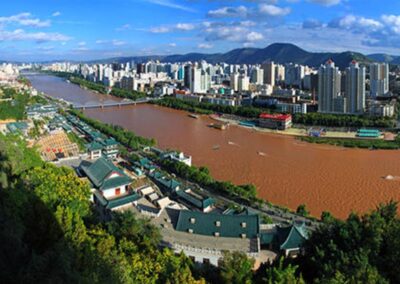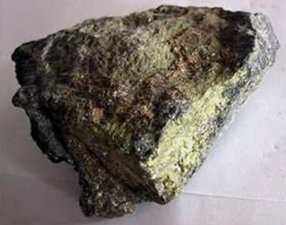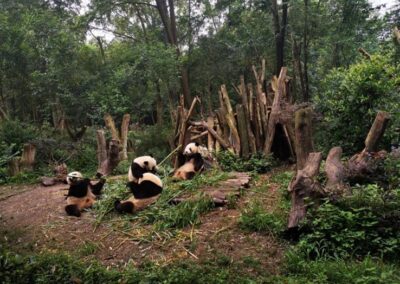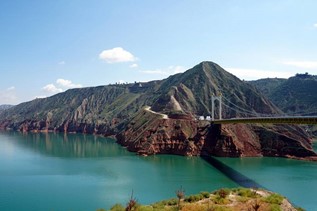Gansu overview
Territory, population and topography
Gansu province is located in the upper reaches of the Yellow River in western China. It is a mountainous plateau landform that features crisscrossing mountains at different altitudes. Blessed with the Gobi Desert, forest steppes, glaciers and snow peaks, striking landforms and canyon caves, the natural scenery is magnificent.
It is a multi-ethnic province, where ethnic minorities account for almost 10% of the permanent population. The main minority group is called “Hui”, including the Tibetans and Mongolians.
| Total area: | 425,900 km2 |
| Provincial capital: | Lanzhou city |
| Residential population: | 26.37 million |
| Climate: | Temperate, monsoon-influenced, continental climate |
| Temperature: | January -9°C to 3°C; July 19°C to 31°C |
| Altitude: | between 1500m to 3000m |
Natural resources and endowment
Gansu is rich in natural resources, and it is one of the important birthplaces of the Chinese civilization. In 2017, it ranked first on a Lonely Planet “2017 Best in Asia” list. In 2018, it ranked 17th on a list of 52 places to go in the world by the New York Times, and was the only place selected in China.
Gansu is also a birthplace of traditional Chinese medicine. It has more than 9500 herbal medicines, ranking second in China. Its planting area and comprehensive output rank first in the country. In 2017, a National Comprehensive Experimental Area of Traditional Chinese Medicine Industry was formed, it is the only one in China.
Minerals, such as nickel, cobalt and platinum have the highest reserves in China. Gold, coal, oil and natural gas reserves rank top in the nation. Renewable energy sources are also abundant. Guazhou city is known as the “World Wind Bank”. Besides, Gansu is also one of the three regions with the most solar energy in China.
There are 39,700 km2 of forestland in Gansu, with more than 4,000 species of wild plants, and 54 species or subspecies of wild animals which are listed as national rare and precious animals, including giant pandas, golden monkeys, musk deer, lynx, mink. Gansu is one of the seven provinces with more than 150,000 km2 of natural grassland in China, it is an important base for stockbreeding.
The Silk Road was a historically important international trade route between China and the Mediterranean, connecting the East and the West in ancient and medieval times.
The scenery and sights along the Silk Road are spectacular and intriguing including the well-known Mogao Caves (Mogao Grottoes) in Dunhuang, a UNESCO’s World Heritage site.
Economy
In 2019, scientific and technological progress contributed 54.03% of Gansu’s economic growth. The output values of the Lanzhou-Baiyin Innovation Demonstration Zone have reached 39.75 billion RMB and its Pilot Free Trade Zone is measured at 90.68 billion RMB. In 2019, the total import and export of Gansu to countries along the Belt and Road accounted for 52.9% of its total foreign trade value.
2020 GDP: 901.67 billion yuan($139.04 billion); +3.9 percent over 2019 13% Primary industry; 32% secondary industry;55% tertiary industries Added value of top 10 ecological industries: 24.2% of total provincial GDP
Environment
Provincial environmental policies have been enacted to minimize the severe pollutions in the past years. Gansu people are proud of the achievements, and more importantly, Gansu province is now an ecological safe shelter zone in China. Nowadays, a beautiful new Gansu with bluer sky, greener mountains and clearer water can be enjoyed.
Yellow River Basin:
The pilot system of the Qilian Mountains and Giant Panda National Park has improved steadily, and the ecological protection and high-quality development of the Yellow River Basin has officially started.
Air:
Gansu was once one of the most polluted provinces in China. With over a decade of environmental remedies, air pollution has been mitigated. In 2019, the comprehensive air quality index of the whole province was 3.59. In fourteen cities and prefectures the percentage of good-air days reached 93.1%.
Water:
The proportion of good surface water quality in 38 water bodies meets national assessment requirements.
Carbon Emission:
To achieve sustainability on carbon emission reduction, a project called “Gansu Ecological Environment on the Cloud (Big data management platform for environmental monitoring)” is being built. Zhangye city is a national ecological demonstration point, and Pingliang city has been awarded as the Virescense Exemplar City of China.
Forestry Protection:
With the help from local advanced groups to reverse desertification and implement afforestation, young and old citizens have been motivated to participate. BabuSha Forest Farm was named as an innovative and practice base of ecological environment by the Ministry of Ecology and Environment.

















